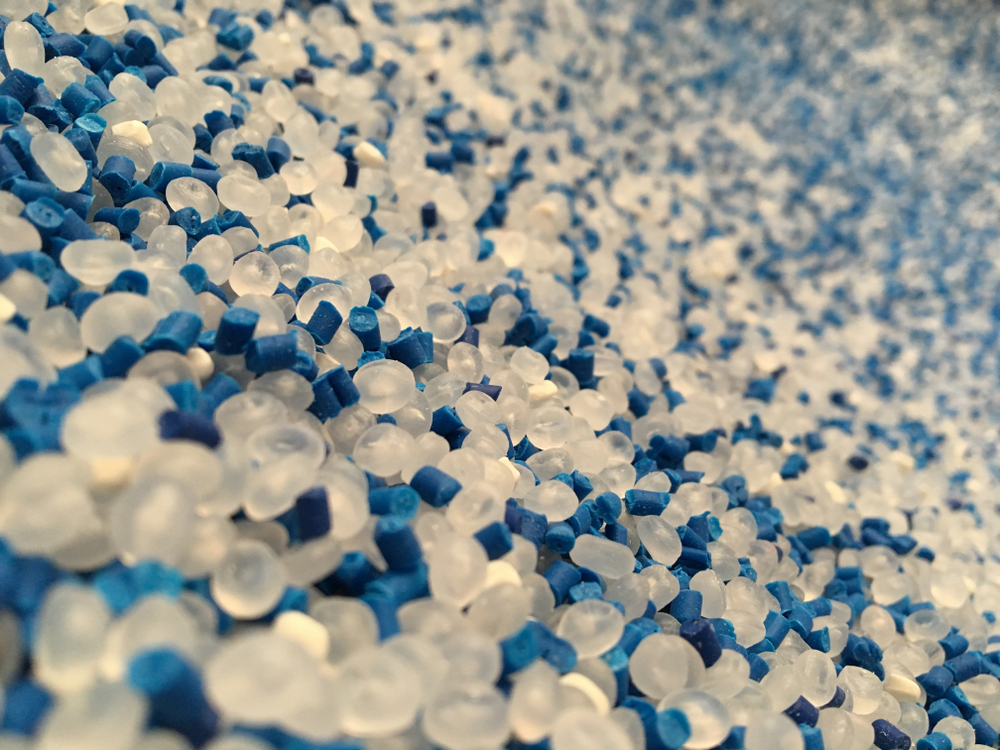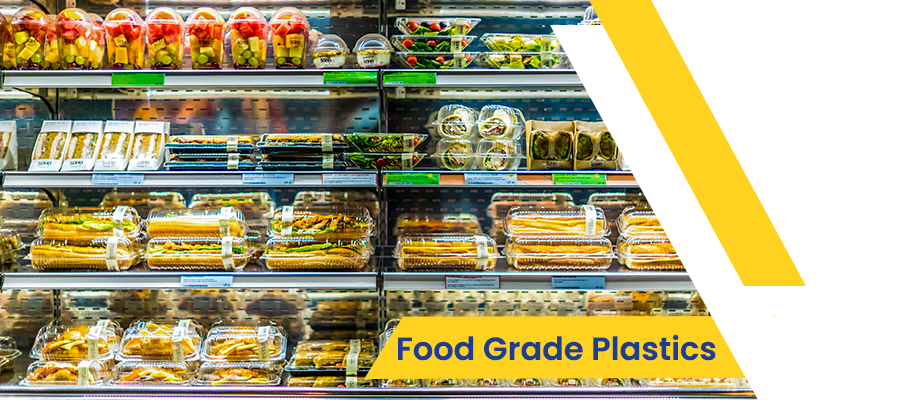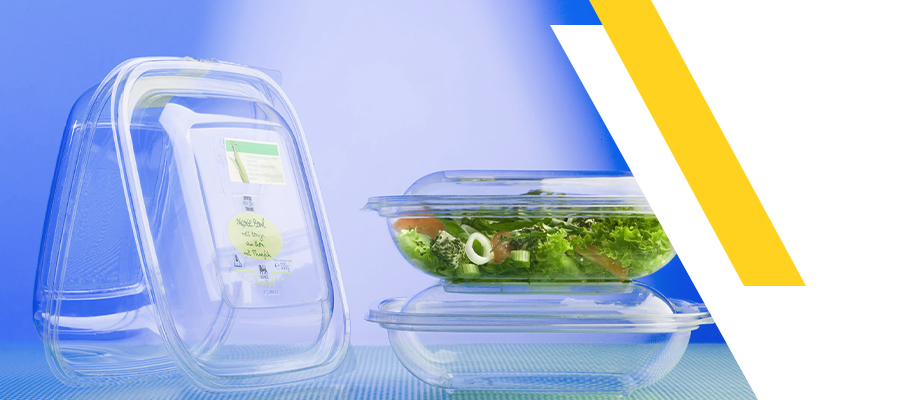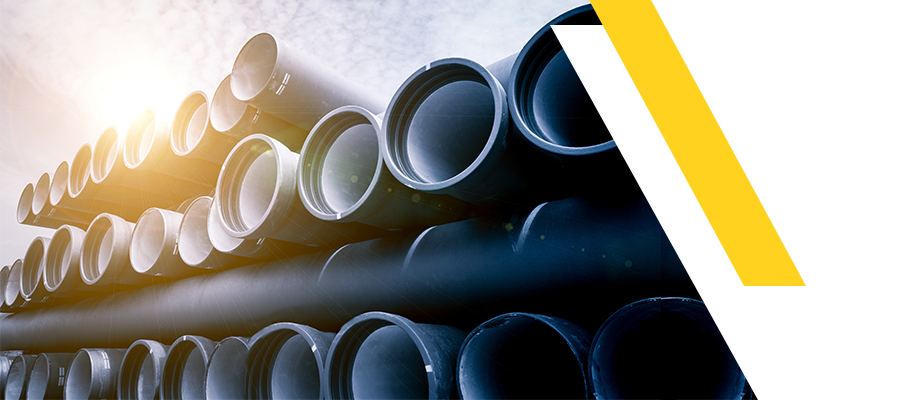
Food Grade Plastics: FDA Approved Grades

Have you ever wondered what makes plastic resins usable for food? Or what is the food grade plastic and what are the standards that are set for the safe production and storage of food?
We have created this article specifically to answer all your questions regarding food grade plastics covering the following:
1- What are food grade plastics & what is “FDA Compliance”?
2- What are the most common uses of food grade plastics?
3- Which Plastics are food safe & how do we make sure that this plastic can be used in food packaging?
4- What are Plastics that should never be applied to food
5- Is food-grade plastic recyclable?
6- What are the 3 most important plastic additives for food packaging?
1- What are food grade plastics & what is “FDA Compliance”?
Food grade plastics are food safe plastics that can be used without affecting our health. So, any plastic is suitable for food consumption and drinks.
Some liquids or acidic foods can affect chemicals in plastic containers, so they must be saved in perfect and safe containers.
Regarding the “FDA Compliance”
FDA refers to the Food and Drug Administration. Its mission is to ser standards for the safe storage of the food and beverage besides drugs.
They have a closer look at the packaging materials including plastics and preparation equipment.
“FDA Compliant” is the secret behind the “food grade.” It means that this grade meets all the requirements and guidelines for direct contact with food.
This brings us to the next question: What are the characteristics of the “Food grade plastics”?
Food grade plastics have perfect wear resistance and flexural modulus, high strength, and excellent dimensional stability.
2- What are the most common uses of food grade plastics?
Of course, the hospitality and beverage industries make up most uses of food-grade plastics. However, uses are more diversified than you might imagine:
Here are the most of them:
- Bottles for medication and pharmaceutical industry
- Grains storage and agricultural applications
- Animals storing, fish farms for instance
3- Which Plastics are food safe & how do we make sure that this plastic can be used in food packaging?
Only a few significant types of plastic are safe for food. That doesn’t mean you don’t follow the guidelines regarding temperature and recycling.
That’s why we’ve created this list for you, just check the plastic number:
#1 (PET)
- Polyethylene terephthalate, known as PET. It is lightweight and impact resistant.
- It is used for water bottles, medical jars, soda bottles, and peanut butter jars. When it is rigid or semi-rigid, it helps to protect food or liquids.
- This type is safe, but you must keep it out of the heat, sunlight, or longer storage, it may leach and cause diseases, also you must avoid reusing it.
#2 HDPE
- High-Density polyethylene, known as HDPE. It is a strong & lightweight material.
- It is used for juice bottles, butter tubs, and food storage containers.
- It is safer than PET and has low rich of leaching.
#3 PVC
- Polyvinyl chloride, known as PVC, is a popular type of chemically and biologically resistant plastic. It is primarily made from the element chlorine. PVC containers protect the integrity of the products contained within, including medicines.
- It is used to make food wrap and cooking oil bottles.
- It is not safe for cooking or heating, as it contains chemicals called (phthalates) which affect hormones in our body.
- Never put plates with the food wrap in the microwave, and check your baby toys, if it contains PVC, just put them in the trash.
#4 LDPE
- Low-density polyethylene, known as LDPE. It has high heat resilience. It is tough and flexible.
- It is used to make grocery bags, squeezable bottles, bread bags, some food wraps.
- LDPE’s only problem is that it is not recyclable, so we prefer reusing it to save the environment.
#5 PP
- Polypropylene, known as PP. It has a high melting point.
- It is used for yogurt cups, ketchup bottles, and medicine.
- It is a safe type for microwave use, as it is heat resistant, but anyway it is better for your health to use a glass container for microwave.
#6 polystyrene
- polystyrene PS, known also as Styrofoam. It is hard plastic. It can be made into foam.
- It is used in packaging and for most disposable containers.
- When solid, polystyrene is regarded as safe for use in food. But when food is heated, toxins can leak into the food from the foam.
#7 (everything else)
- It includes all other types of plastic, such as bioplastic and polycarbonate.
- It is used in some water bottles
- You do not know what could be in it.
- Using it is so risky, as it contains BPA(Bioplastic) which is highly toxic.
To sum-up, Plastics in types #2, #4, and #5 are safe but do not put them in the microwave.
Plastics #1, #3, #6, and #7, are not safe and should be used with extreme caution in food and drinks, #1 is the safest type to use in cool environments.
4- What are Plastics that should never be applied to food?
There are some types of plastics that you shouldn’t store food as they are exposed to chemical leaching.
Here are the most common types:
- BPA (Bisphenol)
- PS (Polystyrene)
- PVC (Polyvinyl chloride)
5- Is food-grade plastic recyclable?
The answer is “Yes.” It depends, specifically, on the material. Food grade plastics are recyclable. For instance, HDPE is considered one of the common recyclable plastics.
To be honest, several food grades can be recycled but you can’t make sure that the result “recyclable materials” are food safe.
You can apply mechanical recycling or chemical recycling to recycle food grade materials.
6- What are the 3 most important plastic additives for food packaging?
There is a wide range of additives that can be suitable for food packaging. It enhances not only the appearance of the packaging but also the performance.
Let’s know the most important additives that used for food packaging:
1-Oxygen scavengers
It is added to decrease or remove the level of oxygen in the packaging materials. It is simply used to protect food from oxidation that comes from sensitive components like meat pigments, vitamins, and fatty acids.
2- Colorants
They are essential in food packaging forms. It contains pigments used to give bright colors accepted for food packaging.
3- Slips
They are essential components, especially for flexible packaging. They are used to prevent the static electric charge on the surface of plastic parts. They are recommended to be used in polyolefins, polyamides, and other resins.
Conclusion:
- Food grade plastics are food safe plastics that can be used without affecting our health. FDA Compliance refers to the Food and Drug Administration, which sets standards for the safe storage of food and beverage besides drugs. Food grade plastics have perfect wear resistance, flexural modulus, high strength, and excellent dimensional stability.
- Polypropylene (PP) is a safe type for microwave use, but it is better to use a glass container. Polystyrene (Styrofoam) is a hard plastic used in packaging and disposable containers but can leak toxins when heated.
- All other types of plastic are safe but should not be used in the microwave. Plastics #1, #3, #6, and #7 should be used with extreme caution in food and drinks. There are some types of plastics that should never be applied to food, such as BPA, PS, and PVC.
- Food-grade plastics are recyclable, depending on the material. The 3 most important additives for food packaging are oxygen scavengers, colorants, and slips. Oxygen scavengers protect food from oxidation, colorants give bright colors, and slips prevent static electric charge.
Contact us now to get your needed food grades!
Suggested Blogs

PVC vs PET For Packaging: Which to Choose?
GAP Polymers Team
PET and PVC are two of the most commonly used plastics in packaging applications. Learn the pros and cons of the two materials to determine which to choose.

Thermoplastic Polymers: A Guide to Plastic Pipes
GAP Polymers Team
Thermoplastics are one of the two kinds of plastic. Take a comprehensive look at thermoplastics and know how to use it to manufacture plastic pipes perfectly.